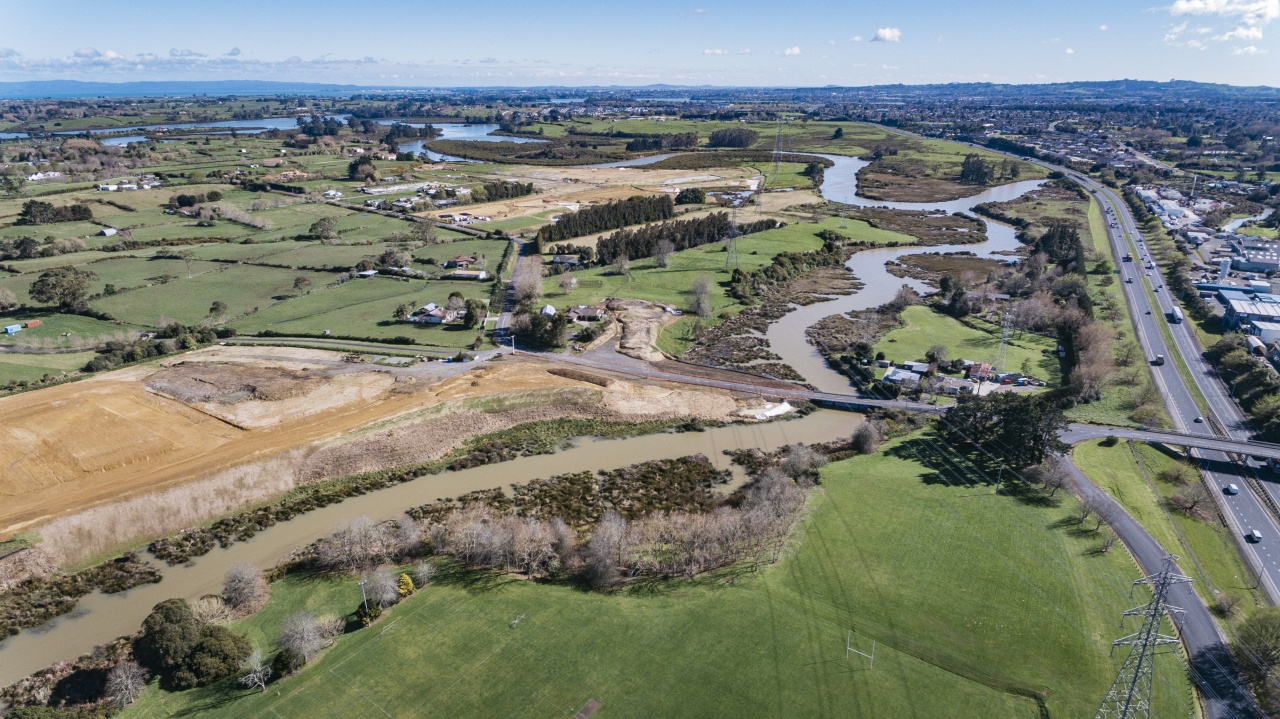Over the next 30 years, a new urban development – covering 2180 hectares and planned for 60,000 new residents – will be built in Drury, south Tāmaki Makaurau Auckland. The region needs the skills, innovation, products and solutions that will transform this largely rural area into a sustainable and connected satellite town.
Located close to major transport routes and the airport, and perfectly situated for the ‘golden triangle’ (the area between Auckland, Hamilton, and Tauranga, which makes up to 50 per cent of New Zealand’s population and generates more than 50 per cent of New Zealand’s GDP), the historic small settlement of Drury has long been in the sights of central and local government and the private sector as an area of future opportunity and economic growth.
The Auckland Plan 2050 (2018) identified around 15,000 hectares region-wide to be urbanised over the next three decades. Over 14 per cent of that total is in the Drury–Ōpaheke area. The plan envisages this area of south Tāmaki Makaurau Auckland as a Future Urban Zone, with 22,000 new homes and large-scale retail and industrial developments to support 12,000 new jobs. The area is also forecast to gain two new rail stations; electrification of the rail lines and upgrades to SH1 and Mill Road are planned, too.
Why Drury?
Drury is seen as a good location for business growth that will support all of Auckland. The area is already home to a range of sectors – including manufacturing (currently accounting for around 36 per cent of local jobs), construction (24 per cent), and transport and warehousing (7 per cent), as well as wholesale trades. All these sectors are key to boosting economic growth, and Drury is an ideal locale for expanding them.
In addition to its strong transport links, Drury lies on the Hamilton–Auckland corridor. This key route was the subject of a 2020 development plan by Future Proof, which calls for “communities that have affordable housing, schools and health services; natural green spaces that enable native plants and animals to flourish . . . parks and recreation areas that create vibrancy for residents; [and] planned roading networks that enable easy connections for residents and visitors and support businesses to thrive.”
An economic masterplan is in development
Tātaki Auckland Unlimited is now working with public and private sector partners to create an economic masterplan for the Drury region, making sure the mix of industries includes those that are best suited for the area, the region and its people, and will provide quality jobs for local communities.
A MartinJenkins report commissioned by Tātaki Auckland Unlimited in 2021 identified four options that could unlock south Auckland’s economic potential:
- an advanced industrial park (advanced manufacturing, engineering, construction and distribution companies)
- a health and well-being precinct
- a circular economy district, and
- a food and beverage cluster.
As the report points out, “large format industrial and manufacturing activities are particularly well suited to a location such as Drury and are relatively constrained elsewhere in Auckland.” Manufacturing, too, offers “future opportunities associated with wider industry 4.0 drivers and where the impacts of automation, robotics, artificial intelligence and the like can create new advanced manufacturing opportunities for Auckland”.
Drury, notes the report, is the only location in New Zealand that appears in two Urban Growth Partnerships – these connect the Crown, local government, iwi and local communities to deliver the Urban Growth Agenda objective.
Critical transport infrastructure
The Auckland Upgrade Programme, partnered by Auckland Council and central government, has earmarked NZ$1 billion to invest in passenger and freight rail; this includes around a quarter-million for two new rail stations at Drury, including park-and-ride facilities and a bus–rail interchange. As well as improving suburban connectivity, this investment will enable transit-oriented development at Drury, where a core of reliable public transport, rather than a dependence on private cars, points the way towards healthier, more sustainable communities. There will also be significant upgrades to Mill Road and SH1.
Opportunities for investors
Tātaki Auckland Unlimited is building awareness that the region is ‘open for business’. In partnership with the government housing provider Kāinga Ora, Tātaki Auckland Unlimited is developing business attraction possibilities that relate to the four options listed above, as well as promoting the area as a location to live, work and thrive.
Various governance groups have been formed with key stakeholders including iwi, landowners, public sector agencies and local boards. Key work has been initiated with consultants to develop the shared vision into specific projects, and to identify their commercial viability and requisite infrastructure.
With Auckland being the country’s economic powerhouse, the expansion of this well-connected, land-rich area as an engine for the national economy and a locality for people-oriented living holds great promise. Both local and national government are committed to delivering on the long-term vision for the area.
Find out more
To speak to our team about potential investment opportunities in the future Drury region, contact Building and Infrastructure Investment Specialist Aldrin Thayalakal.
DISCLAIMER: This article provides general information on potential investment opportunities in Auckland and is not intended to be used as a substitute for financial advice. The views and opinions expressed are those of the relevant author, and do not necessarily reflect the views of Tātaki Auckland Unlimited. Tātaki Auckland Unlimited disclaims all liability in connection with any action that may be taken in reliance of this article, and for any error, deficiency, flaw or omission contained in it.
